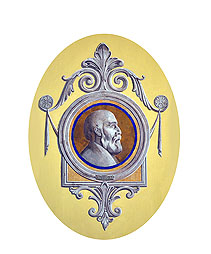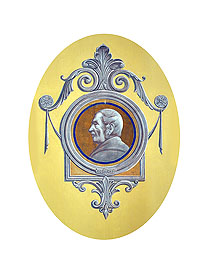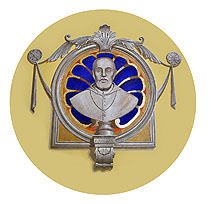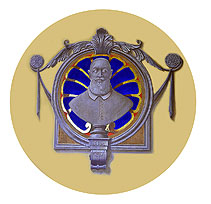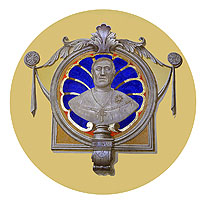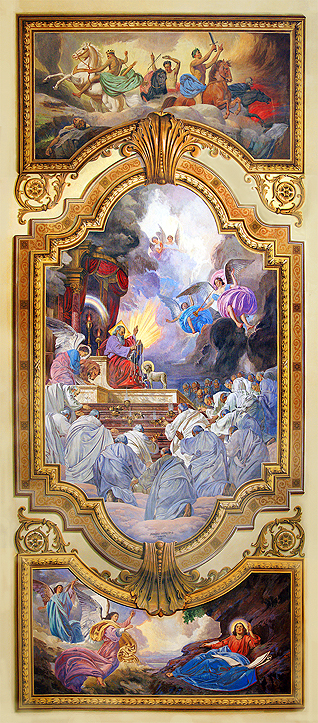| Please move the cursor over the figures represented on the picture. |
|
"By entering the stairway of the Bibliotheca, our attention is drawn by the secco paintings of Gábor Magasi Németh painter, who studied in Berlin and Munich, and prepared the secco paintings for Antal Leopold canon according to his “jussu et sumptu” order (meaning that the secco painting was prepared according to order and at the expense of the orderer).
[...] The painting on the side wall of the stairway was prepared in 1931 and represents the life of the library in the old times, by idealising the fact of the foundation and representing the ecclesiastical and secular notabilities of Esztergom as well as the ones being related to Esztergom." On the side walls upstairs we can observe the painted figure of ecclesiastical people playing a role in the life of the library. Canon János Küküllői, whose heritage gift — as tradition tells us — provided a base for the library at the end of the 14th century. Canon János László Kőszeghy, canonici columnares and vicar general (+1641), whose library served — according to his will — as a base for the separate captiular library of Nagyszombat (Trnava) Archbishop Ferenc Forgách , who provided the books to the library from the heritage of archbishops and canons during the council of Nagyszombat in 1611 by means of a statute. Archbishop György Lippay, who paid 3300 gold coins for the library of Antal Fugger in Vienna comprising 1681 volumes. Archbishop János Scitovszky; it is to his merit that the building could house the Cathedral Library in 1853. Zoltán Kovách, The History of the Cathedral Library of Esztergom From the 11th Century to 1820, 2nd expanded edition, Esztergom, Cathedral Library of Esztergom, 2011, p. 6. |
| By clicking on the index pictures a bigger size of the picture appears. |
